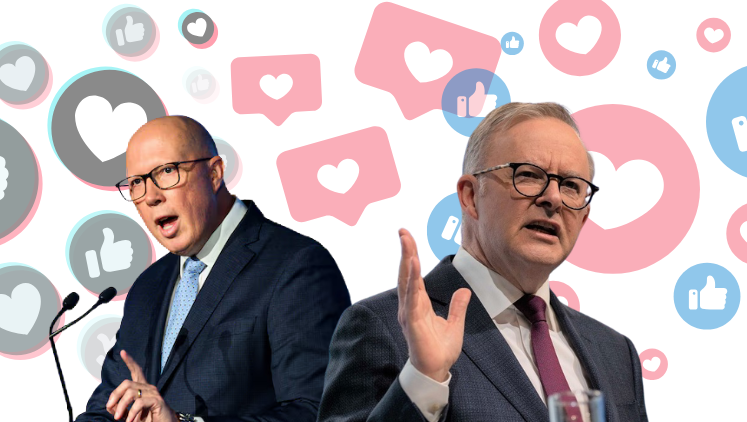The Inside Word

Scroll Wars
For what felt like eons before PM Anthony Albanese fired the starting gun on the race to May 3, everyone was certain this would be an election like never before. How right everyone was! Yes, the heat was on big, heavy topics (such as cost of living, cost of living and cost of living), but ignoring for a moment the policy and politics of this very political event, it was indeed an election like never before purely by how it was campaigned.
This was no junket of debates and cuddling babies, executed cleanly according to ‘the plan’.
What we saw unfold was the political equivalent of real time traffic info where the party social accounts were Google Maps. In one suburb (call it TikTok, primary population 25-34 years old) it was a pile up of content about grocery prices, climate change and housing affordability. In the adjacent suburb (known as Instagram, average resident aged 35-55ish) it was a slightly less chaotic but equally noisy traffic jam of cost of living, migration and energy transition. Over the hill, we reached the slightly more established suburb of Facebook (you need proof of age of 50+) with a high frequency of more orderly content around Medicare, national security and superannuation.
There was some seriously clever marketing behind the campaigns here. The party puppeteers pulling the content marketing strings for the ALP, LNP and the Greens nailed the brief when it came to leveraging social media to their advantage. It was never a policy contest. It was a content marketing contest. The players knew what to say, who to say it to and where to say it. They went high, they went low and they went fast.
Cases in point:
On Thursday April 3, Anthony Albanese fell off the stage at a conference in New South Wales. The LNP clapped back with this post and took the chance to turn the gaffe into a smear campaign.
On Saturday April 5, Peter Dutton accidentally hit a cameraman with a football at a photo-op in Darwin. In less than 24 hours, Labor had an ad using parts of the footage rolled out and didn’t miss the chance for a take down on some key messaging.
Within the day of Dutton backflipping on his WFH policy, the ALP had this snappy video out.
Practically as the debate was taking place on April 7, the LNP threw this post on their feed.
It’s not classy and it’s definitely not part of ‘the plan’, but it’s got cut-through that Uber Eats at Super Bowl Sunday would be envious of. You only need to look the comments to see how powerfully quick and deep these clever plays on unscripted moments get hold at a level littered with undecided voters. This was definitely a new election for the ages, and not least because policy points came 3rd, 4th or 5th in the ads.
What’s equally fascinating, particularly for anyone who knows the rules of engagement when it comes to the best-practice frequency of social posts, is the blatant disregard for those alleged rules by the parties in the campaign. Any experienced marketing advisor will generally caution against multiple posts on the account grid per day (stories can be a lot more generous), but it worked to the parties’ advantages to be really loud, quite relentless and definitely chaotic. This was likely down to the huge range of voter demographics represented in the social media sphere, the bulk of which (for the first time) were Gen Z and Millennials, and that those party marketing pros knew they needed to be everything to everyone in the short five-week timeframe.
As users go further down the social rabbit hole, the content that gets served to them gets more and more specific thanks to the mythical algorithms that sit behind the conga-line of content on a feed. What ends up happening is that content pushed out by the parties gets served to users in line with their perceived tastes and interests. If someone watched and reacted to say, the ALP post about Dutton hitting the cameraman with the football, chances are they saw more ALP-sided content aimed at discrediting the opposition via humour. Before we arrived at May 3, we all had our own echo-chamber of electioneering.
A campaign to an election in 2025 is a new beast.
In this case it was a race fought on who could generate the cleverest, most reactive content first and grab that valuable slice of the attention economy spread thinly amongst the undecided voters ahead of May 3. And it wasn’t won just at the booths. It was won in the comments threads and the first 5 seconds of a reels scroll.


